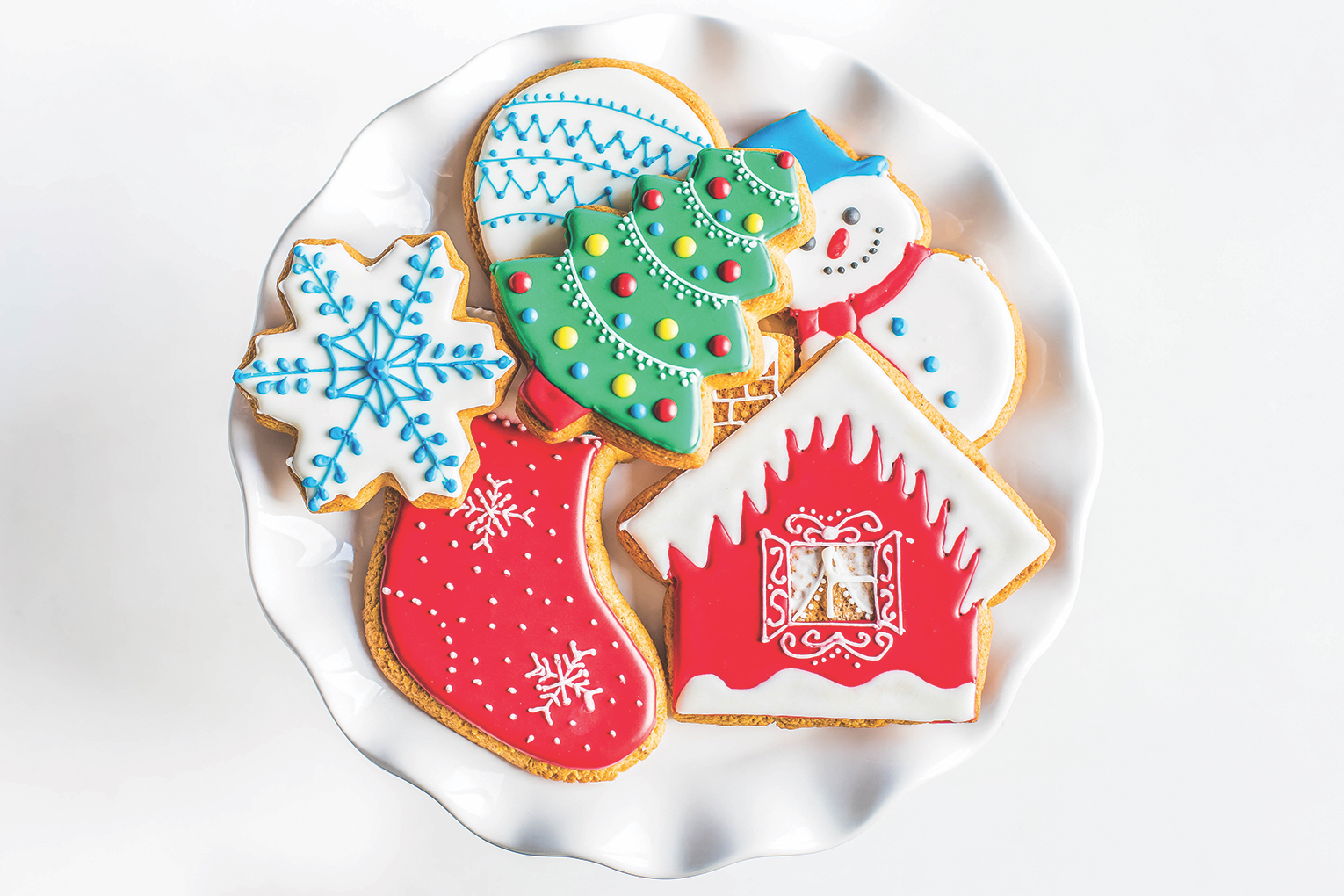Anna Schremmer, K-State Research & Extension Family Consumer Science Agent for Phillips-Rooks District #5
Santa’s Cookies

When it gets to be December, baking cookies for the Holidays is an activity for the whole family. One of my favorite things to do is making sugar cookies with my grandchildren for Santa. We cut out many shapes and frost them. They don’t look like the cookies on the baking shows, but that is not why we do them. This is a special time with grandma and hopefully the tradition will continue long after I’m gone.
What exactly are cookies and where did they originate from? A cookie is a small, baked sweet treat. Cookies came to be when small amounts of batter were dropped onto baking pans to test oven temperature before baking a cake. Originally called “little cakes” (from the Dutch word koekje), the name stuck over time – both due to the treat’s small size and the fact that a cookie can be eaten by hand rather than served on a plate with a fork.
Then cooks discovered that using less moisture in cake batter yields a treat with a firmer, crisper texture.
Soon, “little cakes” were intentionally prepared as a small, individually-portioned finger food. With moisture removed, cookies stay fresh much longer than a sponge-like cake.
There are six categories of cookies.
1. Drop cookies, such as a chocolate chip cookie, are baked by dropping or pushing spoonful’s of cookie dough onto the baking sheet. During baking, the mounds of dough flatten and spread.
2. Molded cookies, made from stiff dough, are formed into shapes before baking. Cookies are shaped by hand or in a mold. Cookies can be hand-shaped into wreaths, crescents, canes, logs, and balls. Molded cookies can also be created by using cookie molds, mold pans, cookie stamps, or a specialty rolling pin. Think peanut butter cookies for a molded cookie.
3. Pressed cookies , or Spritz cookies, are made from soft dough that is placed in a cookie press (also called a cookie gun) or pastry bag and pushed through decorative disks at the tube’s end, forming fancy-shaped designs. These are “melt-in-your-mouth” butter cookies often served at tea time.
4. Somewhere in between a cookie and a cake, bar cookies are some of the quickest and easiest cookies to make. Dough and other ingredients that are poured or pressed into a pan with sides, sometimes in multiple layers. After baking and cooling, they are cut into shapes such as squares, rectangles, triangles, or diamonds or for special occasions cookie cutters.
5. Refrigerator cookies are made from dough shaped into cylinders, refrigerated to become stiff, and then sliced and baked. The dough can also be prepared in layers, as for pinwheel cookies, or rolled out flat, sprinkled on the surface with fillings, and rolled into a log before chilling.
6. Rolled cookies, such as sugar cookies, are cookies made out of a stiff dough that is rolled into a thin disk like pie crust. Cookie cutters are used to cut various shapes depending on the occasion. The cookies are baked just until the bottom is slightly browned. Then they are cooled, sugared or frosted and saved for Christmas Eve when Santa comes.
No matter what kind of cookie you make this holiday season, enjoy the time spent with your children/grandchildren making memories.
“Knowledge for Life” provided by Phillips-Rooks Extension District #5 and K-State Research and Extension.




